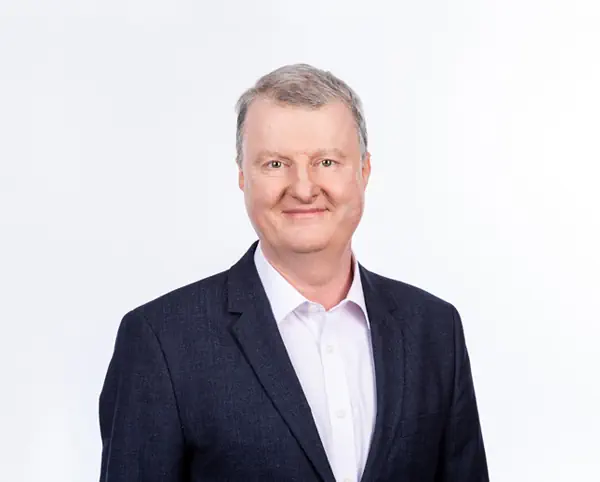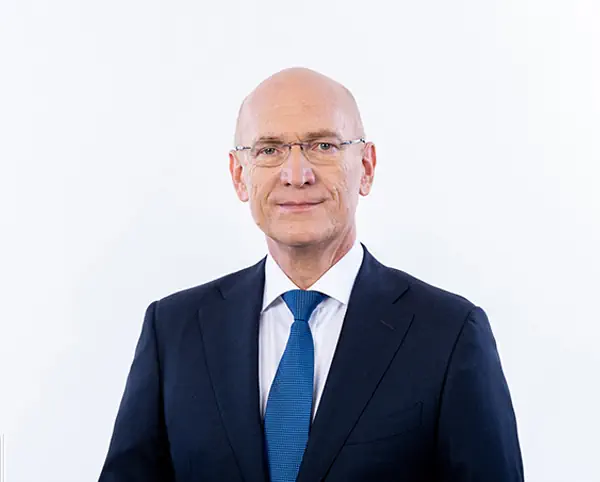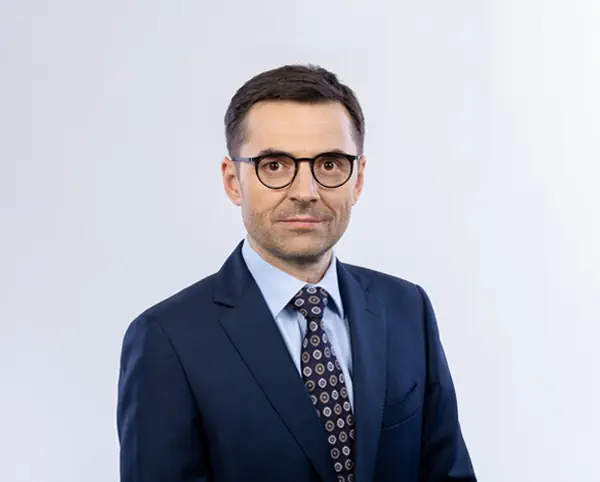‘We can see vast opportunities opening ahead of us.’
Research work on the innovative Polish NanOX organ storage system is entering increasingly advanced stages. In an interview with Prof. Maciej Kosieradzki, head of the Department of General and Transplant Surgery at the Faculty of Medicine of Medical University of Warsaw, we asked him how the introduction of a new standard for organ storage could change the face of transplantation.
You are currently researching an innovative liquid for storing organs for transplantation. Can you tell what this innovation consists of?
Perhaps let’s start with why organ storage is needed at all. The moment a person dies somewhere in Poland, let’s say in Suwałki, and we drive from Warsaw to Suwałki to retrieve the organ and bring it to Warsaw. From a list of about 1,200 people waiting for a kidney transplant, we select the 2 most genetically similar to the donor. They must not have blood serum antibodies against the donor. In order to test this, we treat live donor lymphocytes with the serum of our selected recipients, and only after observation do we know that we can effectively and safely transplant organs. In case of the kidney, this process takes about nine hours. Only then do we know that we have patients selected for transplantation. Next, they head to the dialysis station and have to reach us for surgery. Throughout this time, we must keep the organ alive. Normally, after the cessation of circulation, the process of tissue death begins. So far, we have only been able to slow down the process by cooling down, slowing down the metabolism and using preservative fluids. This gave us six hours in the case of the heart, 12-16 hours in the case of the liver and 24 or even 36 hours using a perfusion pump, in the case of kidney transplantation, to make the necessary arrangements to transplant the harvested organ to the recipient.
And there is a place for the liquid you are working on as a part of NanoGroup’s research?
Our idea is to store organs in normal temperature conditions. Attempts have been made to make this a reality for many years – such solutions are being used in the storage of the heart, lungs or liver. Thanks to that, organs can be stored for a relatively long time. We made the assumption that if we could get as close as possible to the 37°C temperature at which our enzyme system functions, such an organ would stop dying. That’s the idea behind the NanOX fluid being developed by NanoGroup with an oxygen carrier and the use of normothermia.
I’d like to speculate that if we reperfuse already partially damaged organs with blood, the cell death process accelerates rapidly due to contact with blood and its leukocytes. I suppose that if we would restore circulation and normal metabolism without perfusion fluid devoid of leukocytes and platelets, we may be able to still save a large part of these cells, dying by apoptosis mechanism, and if that is not possible, allow the removal of toxins and residues formed after cell death due to necrosis.
This would mean that the risk of rejecting such an organ decreases?
Yes, and on top of that: it will improve this organ’s condition. It will then be in better condition, better regenerated, its efficiency should be much higher from the beginning. But that’s not all. For years, various attempts have been made to, let’s say: treat organs while they are in storage. Human enzyme systems are adapted to respond to stimuli or drugs at 37°C, for example. If we would be able to keep this organ normothermic, we could potentially still do a lot with it in the distant future.
First, we gain time – we can store this organ for numerous days without losing its quality. Secondly, we can even try to improve its quality by introducing genes to prevent cell apoptosis or to hide or modify the immunogenicity of the organ before it comes into contact with the recipient’s organism and, through this gene insertion, make the organ specific to the recipient – such a custom-made solution.
Finally, most organs are transplanted from deceased donors, who are mostly ill from various causes and as a result may have damaged kidneys, livers or hearts. With this solution, we may be able to successfully treat some of these diseases or remove their effects in an isolated organ. A very wide range of possibilities are indeed opening up. Today, I can’t even quite imagine what my fellow scientists could do with such a preservative fluid, devoid of blood and allowing very long organ storage”.
At what stage is the development of this technology currently underway?
We are working on isolated organs at the moment. We can see that they are functioning. We deal with kidneys harvested from animals, which are deliberately severely damaged by us. We subject them to warm ischemia, a situation in which the circulation stops, and after half an hour only remove such an organ, then keep it still in hypothermia for a long time to aggravate the damage, and only then start resuscitating it, subjecting it to perfusion in NanOX fluid. The condition of these organs really improves a lot, they regain their optimal condition. At some point, they start secreting urine-like fluid, meaning the kidney performs physiological processes – you can see that it undergoes repair. Today, NanoGroup is at this isolated organ perfusion stage, whose viability we study somewhat indirectly, based on the characteristics we know a living kidney should have.
And what are the further plans for research work?
We are approaching the point where such a badly damaged kidney, repaired with NanOX storage liquid, will be transplanted back into the animal and we will look at whether it is sufficient for the animal to survive. This will confirm the effectiveness of the method. Next, there will still be the question of how many animal experiments need to be performed to register the fluid and technology for use in humans. It is unlikely to be many years, but there’s definitely a lot more experimentation to be done.
Have there been any unexpected situations or complications during the research so far? Or has there been some surprising observation that you did not expect?
The abundant urine output, the fact that this kidney so powerfully damaged took up function quite quickly was probably the most surprising sight. This is very good news. We didn’t expect it. In kidneys stored in hypothermia, using today’s fluids in humans, we don’t get to see such a turnaround very often.
Of course we had a lot of challenges along the way, problems to solve – such as the fluid modifications we had to decide on during the experiment. It is also difficult to predict what the body’s reaction will be to such an organ after implantation and trace residues of preservative fluid. Interesting scientific observations probably await us at this stage. However, I am positive and look forward to the next research stages.



